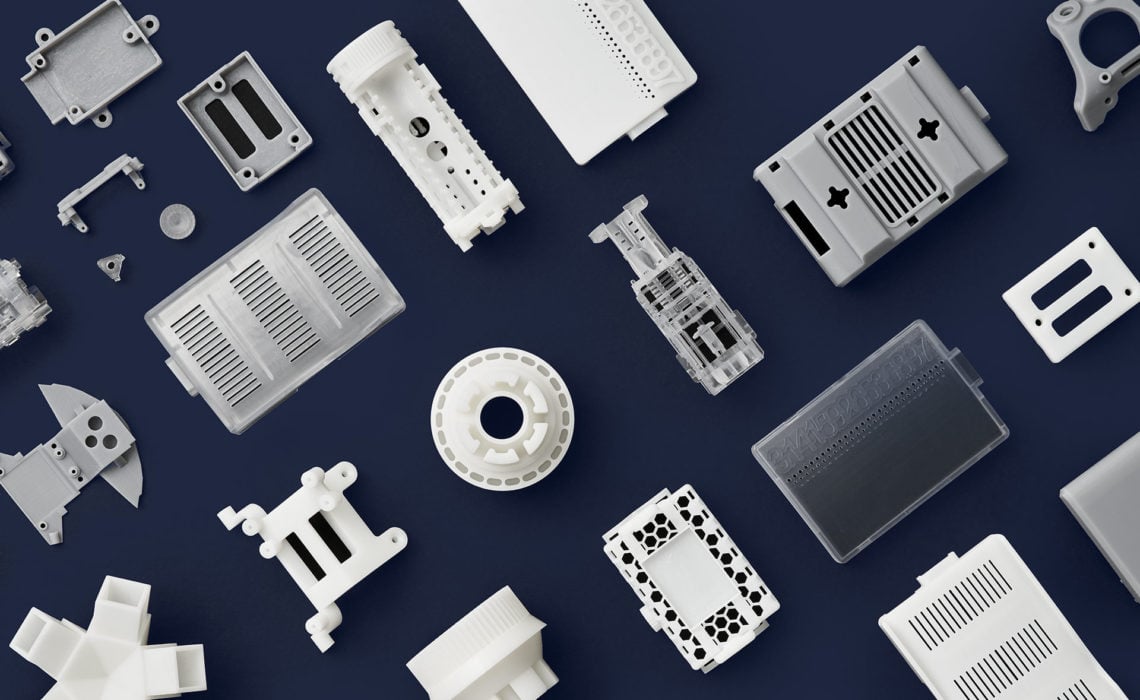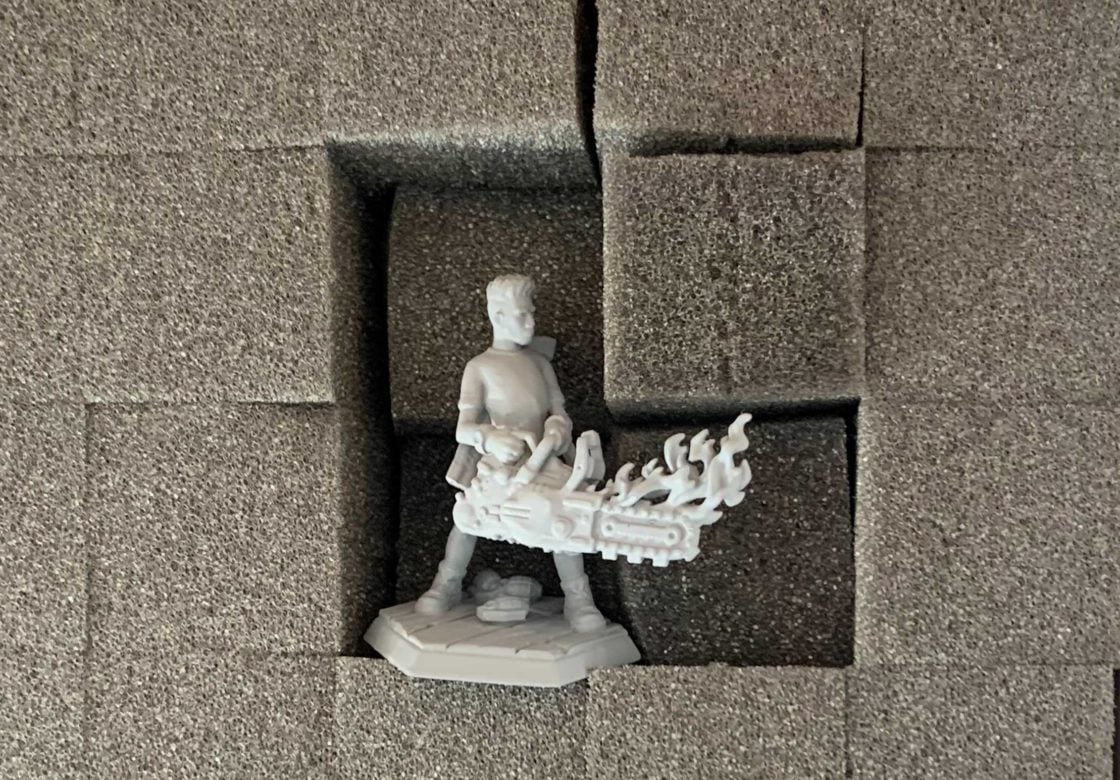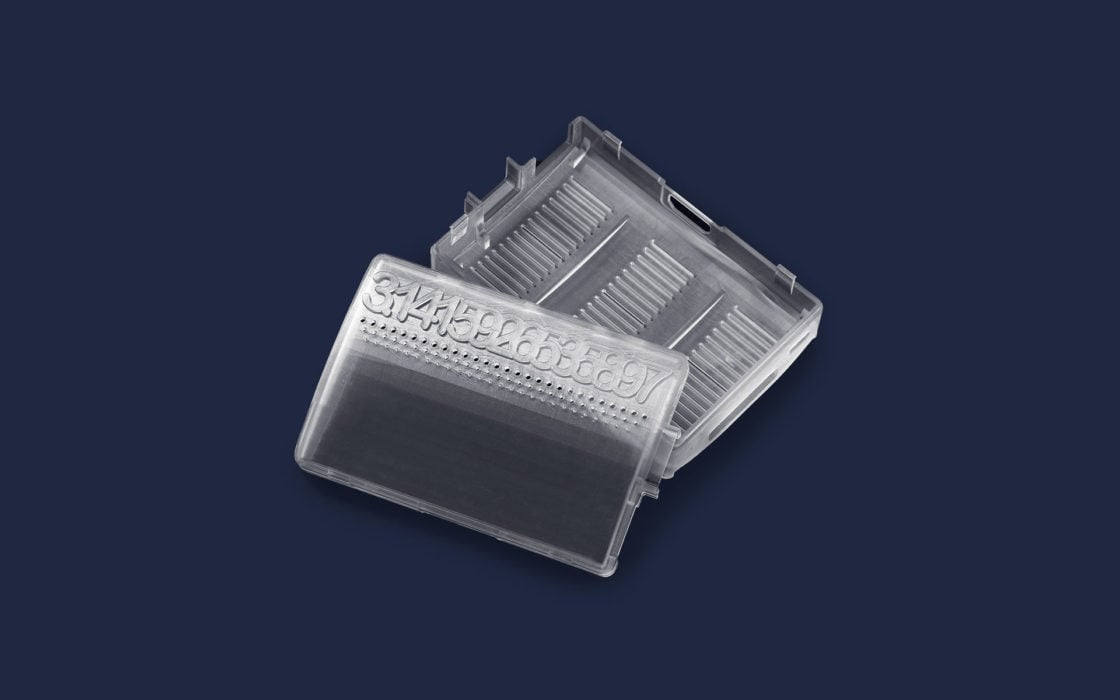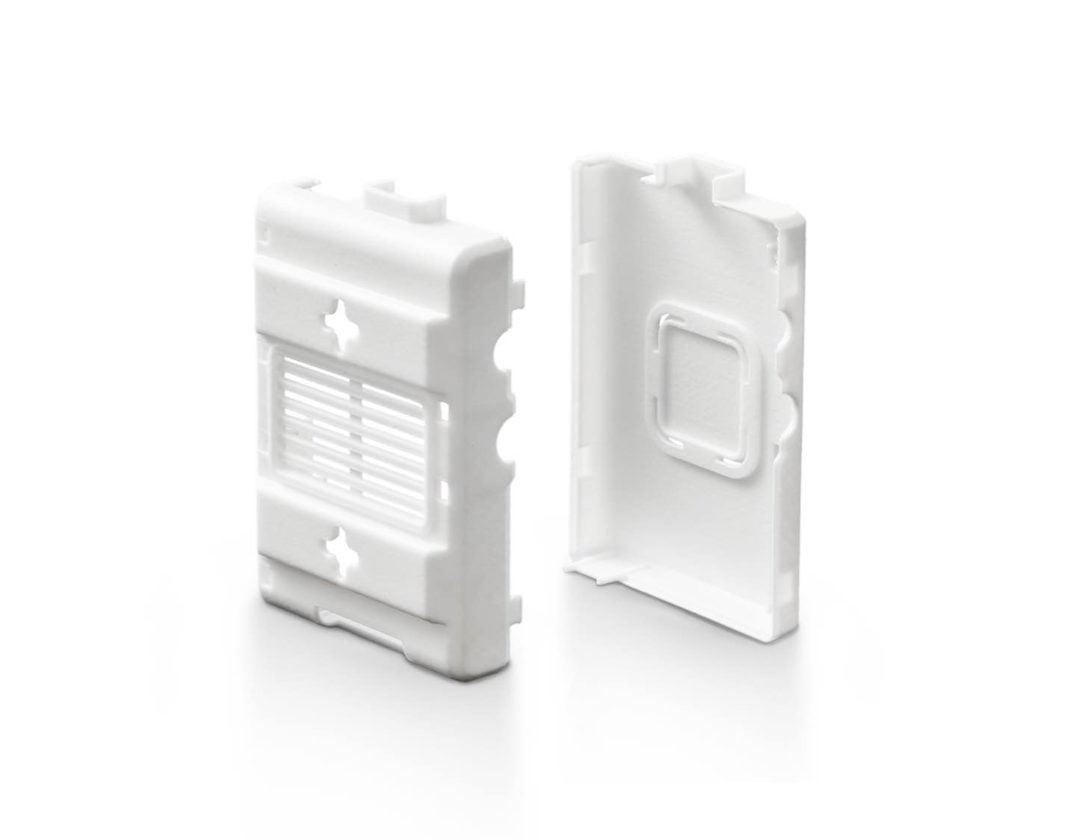
Precise, specialized, and powerful.
As the original 3D printing technology, Stereolithography still reigns in the production of finely detailed, complex geometries. Chuck Hull produced his first part on an SLA 3D printer in his small lab in 1983, and that small, resin-based part set a revolutionary manufacturing trend in motion. Decades later, SLA 3D printing has made impacts in nearly every industry imaginable.
Shapeways offers a versatile range of advanced 3D printing services, continually expanding options for industrial manufacturers–whether resin-based, thermoplastics, steel, or precious metals. The goal is to ensure compatibility of 3D printing materials and technology for maximum printability and quality. Engineers tend to design 3D models for SLA technology when making smaller, detailed parts.
What is SLA 3D Printing?
Operating under the subcategory of vat polymerization, SLA technology relies on liquid resin to build 3D models. Objects are cured and solidified by UV light as each thin layer of material is deposited onto the build platform at the top of the resin tank. During the SLA process, a laser traces or draws the design of the part in each layer.
Famous for accuracy and precision, this 3D printing process offers strong adhesion between layers, resulting in good structural integrity for parts and superior dimensional accuracy. The average layer height for SLA technology is 100 microns, with a minimum of 25 microns.
Stereolithography technology has advanced over decades, always in step with the momentum of the 3D printing industry. Designers and engineers rely on SLA 3D printing for expedient low-volume production of complex master patterns for molds in traditional technology like Injection Molding, as well as additive manufacturing for 3D printed models and industrial parts.

SLA 3D Printing in Product Development
While it may have taken decades for SLA 3D printing to infiltrate the mainstream market, 3D printing played a continued role in success behind the scenes.. With advancements in SLA 3D printing, it is possible to make products that would have been impossible with traditional manufacturing, prompting innovation for complex prototypes for automotive and aerospace.
SLA 3D printing is more accessible now than ever, making it possible to create detailed, realistic products for a wide range of applications, many of which are within the medical industry:
“Stereolithography is particularly versatile with respect to the freedom of designing structures and the scales at which these can be built: submicron-sized structures as well as decimetre-sized objects have been fabricated. In the biomedical field, these developments have led to the fabrication of patient-specific models for mold-assisted implant fabrication, aids for complex surgery, and tailor-made parts such as hearing aids. More recently, biodegradable materials have been developed for the preparation of medical implants, such as tissue engineering scaffolds, by Stereolithography,” state researchers in ‘A review on stereolithography and its applications in biomedical engineering.’
Without 3D printing, traditional manufacturers remain stalled during prototyping and development, which can impact deadlines and overall cost. Shapeways customers are reliant on SLA 3D printing services for rapid prototyping to accelerate research and development, making it possible to garner feedback expediently.
The Benefits of SLA in Additive Manufacturing
SLA 3D printing provides good mechanical qualities and a smooth surface finish, making it a popular choice for 3D models or prototypes requiring a realistic look.
Although SLA additive manufacturing technology is used for functional parts, manufacturers rely on 3D printed rapid prototyping services more than ever before. One important difference is that now they may use the same material and technology for both prototyping and functional use. This is made easier due to the ever-growing selection of advanced 3D printing materials and technology.
No lead time is required. Designers have the freedom to choose when they want to design, prototype, and manufacture. At Shapeways, the process is as easy as uploading a 3D model and getting an instant quote back along with file analysis to ensure quality SLA 3D printing. While some customers may create prototypes for intricate 3D printed architectural displays or for client presentations, others may be iterating their way to perfection.
The 3D printed rapid prototyping process with SLA technology and materials could require a couple of different iterations before product development moves on to the final part, but there are some Shapeways customers who go through a much more intense process, prototyping, making changes after feedback, and then continuing to iterate over a hundred times.
SLA 3D Printing Materials and Applications
Manufacturers continue to be loyal to SLA 3D printing over other technology, including desktop 3D printing, because of the need for detail and accuracy as well as the versatility to make a variety of smaller parts like industrial jigs and molds.
3D printing acrylate materials are extremely effective but present challenges too, and researchers have outlined their findings in recent work:
“Acrylate-based resins are common in the SLA process, as they exhibit high reactivities, which is advantageous for fast building speeds. Different types of acrylates are readily available to tune mechanical properties and thermal resistance for example by altering the number of reactive groups or by employing different oligomers such as urethane acrylates. One disadvantage of acrylate resins is their high-shrinkage during printing, causing potential distortion of the printed part. As a solution, the combination with methacrylates is often implemented,” state researchers in ‘Experimental Characterization Framework for SLA Additive Manufacturing Materials.’
Originally the number of materials may have been somewhat limited for SLA users, but Shapeways has remained dedicated to offering more as users are moving past using 3D printing as solely a prototyping tool and making high-performance parts for critical applications. 3D printing users have much higher expectations too as they make designs with greater complexity, requiring quality materials that promise higher performance and smoother surface finish.
SLA additive manufacturing materials and corresponding applications include:

SLA Plastic Accura® 60
Also referred to as Clear Plastic, Clear SLA, or Translucent Resin, this SLA 3D printing acrylate is semi-clear in color, rigid, and offers watertight properties. SLA Plastic Accura® 60 is recommended for SLA 3D printing projects that require complex functional assemblies which must also be transparent, to include industrial parts like:
- Technical accessories
- Lighting components
- Casting patterns
- Snap-fit assemblies
- Prototypes and models
SLA Plastic Accura 60 is offered in a standard, semi-clear finish, and 3D printed products are sanded lightly to remove any potential nubs that may be leftover from support removal. This material may also present slight variations in clarity and texture over the surface of the 3D model, depending on 3D printing orientation and post-processing procedures. It is possible to achieve further optical clarity in post-processing, but that level is generally not included with standard orders using this SLA 3D printing material.
For this material, 3D models must meet the following minimum and maximum bounding box sizes:
Bounding Box Min
3.8 x 3.8 x 3.8 mm
Bounding Box Max
609 x 711 x 457 mm
Find out more about SLA Plastic Accura 60 design guidelines here.

SLA Plastic Accura® Xtreme™
A gray acrylate-based plastic suitable for 3D printing a versatile range of prototypes and parts at any size, SLA Plastic Accura® Xtreme™ is also known as Gray SLA or Gray Resin. This material is also watertight, good for printing on the small and large scale, and is used for complex, functional assemblies for applications like:
- Tech accessories
- Mechanical components
- Snap-fit assemblies
Using SLA technology, Plastic Accura Xtreme 3D printed parts are known for their high resolution and detail. Offered in a standard gray finish, this material is also good for 3D printing parts with smooth surfaces and limited layer lines–similar to the finish that can be achieved through injection molding–but without the added time or expense.
For Plastic Accura Xtreme, SLA 3D models must be within the following minimum and maximum bounding box sizes:
Bounding Box Min
3.8 x 3.8 x 3.8 mm
Bounding Box Max
482 x 482 x 558 mm
Find out more about SLA Plastic Accura Xtreme design guidelines here.

Accura® Xtreme™ 200
A watertight photopolymer resin, Accura® Xtreme™ 200 offers benefits like dimensional accuracy in parts, excellence in strength, durability, and surface finish. This versatile 3D printing material is a white acrylate also referred to as White SLA, White Resin, or Accura Xtreme White 200.
Accura Xtreme 200 is an ultra-tough material recommended for the following industrial 3D printed parts:
- Mechanical parts
- Display models
- Snap-fit assemblies
- Master patterns for vacuum casting
Offered in a standard white finish, products are sanded lightly to remove any nubs from support removal, although some markings from supports may remain.
For this material, 3D models must be within the following minimum and maximum bounding box sizes:
Bounding Box Min
3.8 x 3.8 x 3.8 mm
Bounding Box Max
609 x 711 x 457 mm
Find out more about SLA Accura Xtreme 200 design guidelines here.
About Shapeways
Enjoy the benefits of this advanced technology and a wide range of materials from Shapeways for 3D printing your creations with accuracy, complex detail, and no minimum or limits in terms of mass customization or single part orders. Shapeways has worked with over 1 million customers in 160 countries to 3D print over 21 million parts! Read about case studies, find out more about Shapeways additive manufacturing solutions, and get instant quotes here.


